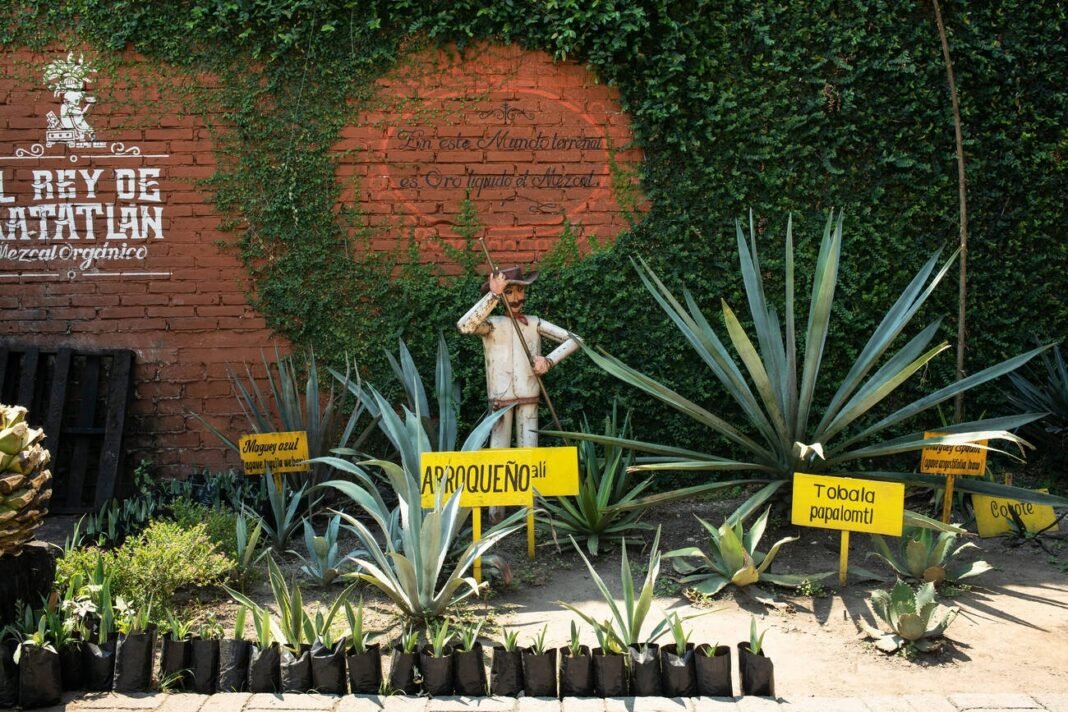Exploring How Is Mezcal Made is made unveils the rich tapestry of tradition and craftsmanship behind one of the most intriguing spirits in the world. Originating from Mexico, mezcal’s unique flavor profile and growing popularity have sparked curiosity about its production process and the mezcal plant it is derived from. This article demystifies what is mezcal made from and the meticulous craft involved in transforming the agave plant into this celebrated spirit. Understanding the complexity and dedication behind each bottle of mezcal enriches the appreciation for this distinct beverage and its cultural significance.
The journey of mezcal from plant to spirit encompasses several detailed stages, each crucial to achieving its signature taste. This article will navigate through the cultivation and harvesting of the agave plant, shedding light on why the term mezcal meaning “oven-cooked agave” is so apt. Following this, the process of cooking and milling the agave reveals the transformation of raw materials into a fermentable substance. Fermentation and distillation further refine the liquid, imbuing it with the characteristics that make mezcal a standout spirit. Finally, the resting and bottling stages cap off the production process, ensuring that what lands in the glass embodies the essence and tradition of where mezcal is from. Guiding through these steps provides a comprehensive look at how mezcal is made, offering insight into its artisanal roots and the factors that make each sip uniquely complex.
Cultivating and Harvesting the Agave Plant
Types of Agave Used
Mezcal production employs various agave species, each contributing distinct flavors and characteristics. Espadín, due to its high sugar content, is the most commonly used, maturing in about eight to twelve years. Wild species like Tobalá are rare and demand careful cultivation; they mature slowly and yield less mezcal per plant. Other notable varieties include Tepeztate, known for its long maturation period of up to 35 years, and Arroqueño, which produces a significant amount of mezcal per plant due to its large size.
Harvesting Techniques
Harvesting agave, or jima, is a labor-intensive process performed manually using tools like machetes or coas, depending on the region and agave species. Skilled harvesters, known as jimadores, select mature plants, expertly cutting away the leaves to reach the heart, or piña, which is crucial for mezcal production. The timing of the harvest is critical; agave plants are harvested just before they sprout their flowering stalk, ensuring the highest concentration of sugars necessary for a quality distillate.
Cooking and Milling the Agave
Traditional Roasting Methods
In the production of mezcal, the traditional method involves using an earthen pit, a practice deeply rooted in heritage and designed to impart a distinct smoky flavor. These pits are lined with local wood and volcanic rocks that retain heat efficiently. The heart of the agave, or piñas, is layered in the pit, covered with earth and agave leaves, and roasted slowly over several days. This slow roasting caramelizes the piñas’ natural sugars, crucial for the mezcal’s characteristic flavors.
Milling Techniques
After roasting, the piñas are ready for milling, a critical step to extract fermentable sugars. Traditional mezcal producers often employ a tahona, a large stone wheel, often pulled by a horse or donkey, to crush the cooked agave. This method, while labor-intensive, preserves the artisanal essence of mezcal production. Some larger producers might use mechanical mills, but ancestral practices favor manual methods, using wooden mallets to macerate the agave, ensuring a meticulous separation of fibers and juices essential for fermentation.
Fermentation and Distillation
Fermentation Process
After the agaves are crushed, the fibers and juices are placed in various fermentation containers, ranging from stone to animal skins, where they interact with naturally occurring yeasts. This process, which can last from a few days to weeks depending on environmental conditions, is crucial as it significantly influences the flavor profile of mezcal. The presence of fibers during fermentation helps in developing a complex taste but requires careful monitoring to prevent overflow from the vigorous bubbling of the brew.
Distillation Techniques
Mezcal undergoes a traditional distillation process in either clay or wood stills, which are smaller and fueled by direct fire, creating unique and limited batches. The spirit must be distilled twice; the first run yields a liquid called ‘ordinario’, and the second distillation refines it into mezcal with an alcohol content typically between 40%-50% ABV. Some mezcals experience a third distillation, especially the ‘pechuga’, which includes raw poultry and other botanicals, adding subtle flavors and creating a spirit reserved for special occasions.
Resting and Bottling
Resting Periods and Methods
Mezcal resting involves various classifications based on duration and container type. For joven mezcal, it is bottled immediately after distillation, maintaining the agave’s pure flavor. Reposado and añejo varieties, however, undergo aging in wood for 2-12 months and 1-3 years respectively, acquiring distinct colors and flavors. An alternative method, Madurado en Vidrio, involves storing mezcal in glass containers for over 12 months, allowing flavors to mellow without wood influence, often in controlled temperature environments.
Bottling and Packaging
Once mezcal has rested, bottling is typically handled by certified distilleries. Artisanal brands may bottle by hand, ensuring each step reflects the spirit’s heritage. Packaging challenges have escalated due to supply chain disruptions, significantly raising costs and affecting availability. Labels undergo stringent approval processes in Mexico and the destination country, ensuring compliance with legal standards. Each bottle is a testament to the meticulous care and tradition that defines the mezcal production process.
FAQs
1. How is mezcal produced?
Mezcal is crafted from the core of the agave plant, specifically using the Agave salmiana species from Mexico’s Altiplano region. The production process involves cooking the agave cores in stone ovens, which converts the inulin into fructose through hydrolysis, followed by fermentation and distillation of the extracted juices.
2. What defines ancestral mezcal?
Ancestral mezcal is distinguished by its traditional production methods, which include cooking the agave in pits, crushing it with hand or stone tools, and distilling the mash in wood-fired clay pots. This method excludes the use of modern technology such as stainless steel, autoclaves, diffusers, and column stills, and retains the agave fibers in the distillation process.
3. What is the source of mezcal’s smoky flavor?
The smoky taste in mezcal originates from the process of roasting the harvested agave underground with hot coals. This method involves direct contact with smoke, which imparts a distinct roasted or smoky flavor to the spirit.
4. What are the primary ingredients in mezcal?
Mezcal can be made from more than 30 different species, varieties, and subvarieties of agave, unlike tequila which is exclusively made from the blue agave. Among the numerous agave types suitable for mezcal production, seven species are particularly prominent.


